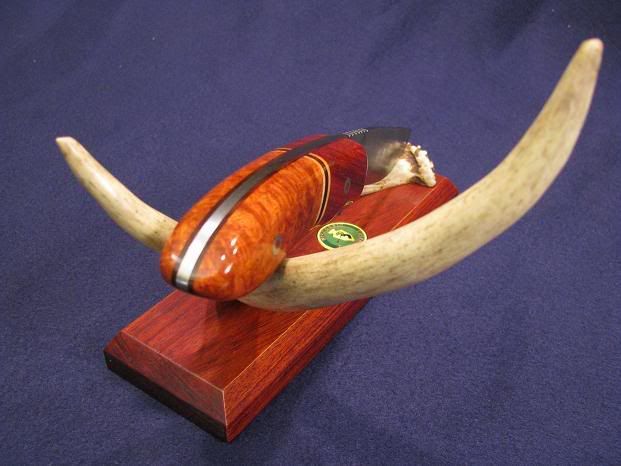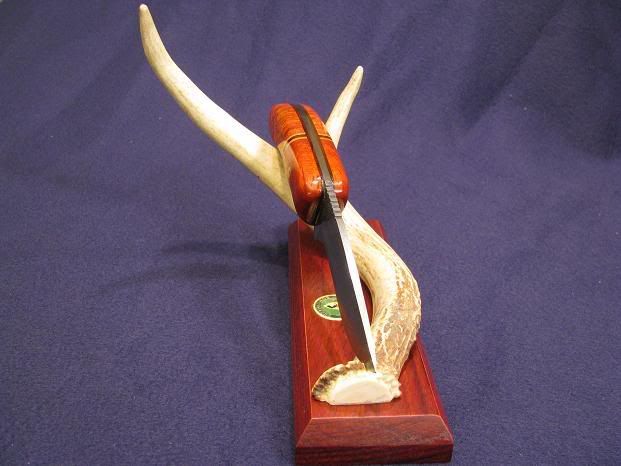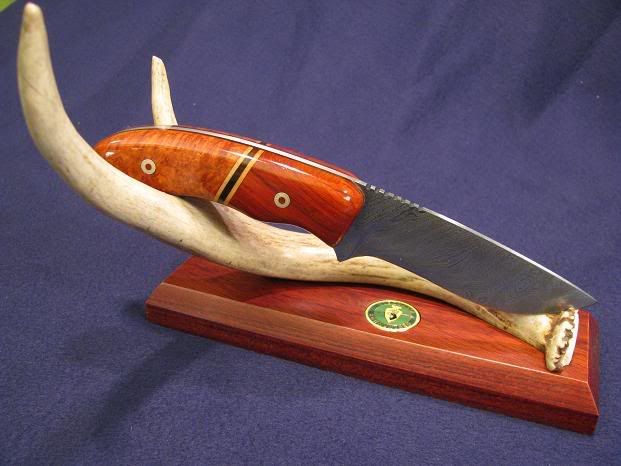I started another new knife and thought I show some of the steps involved in making it. I am donating this knife to the Horicon Marsh Bowmen. Each year, they hold a Wisconsin Bowhunters Association banquet with the proceeds going to the WBH. This one club donates tens of thousands of dollars to the WBH annually and this banquet is a big part of where those dollars come from. They invited me to attend this year's event but do not know about this knife. Since I can't sing for my supper, I thought I'd give in another way.
I went back to the good folks at Two Finger Knife LLC and bought another forged Damascus Steel blank made from 1095 and 15N20 steels.
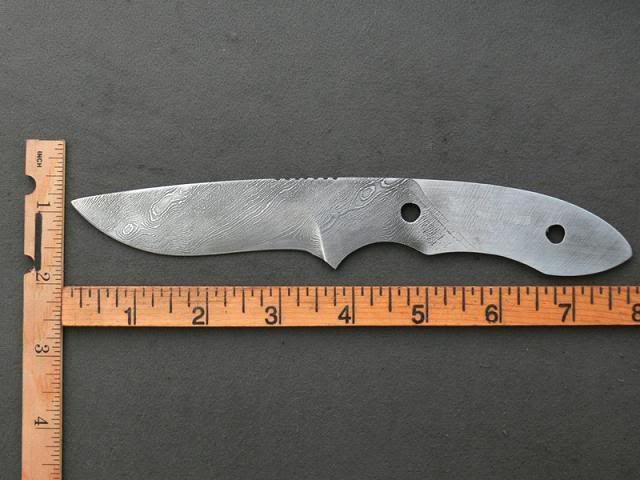

I also bought a set of Amboyna burl knife scales because of their beauty and the numerous, captivating swirls.
Amboyna Burl wood is extracted from the jungles of Southeast Asia and often transported (at least initially) via elephant. It is a favored wood used by folks that make knife handles and pens or bowls. It starts out reddish in color and over time and exposure to light, it turns a warm brown/red. The photo below gives a false impression of the color and exaggerates the red.
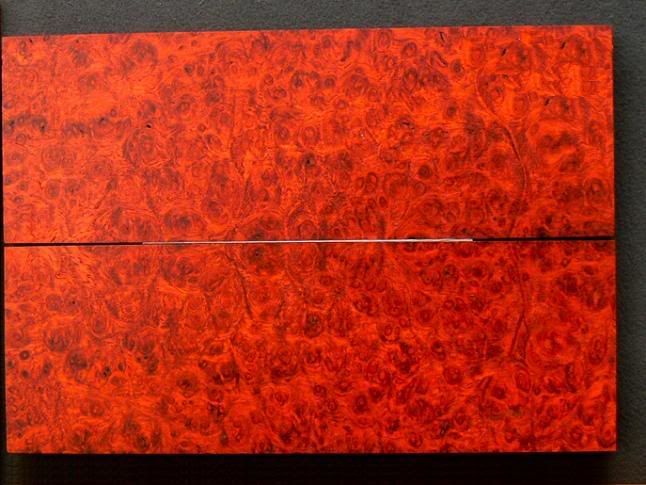
I won't use just Amboyna for the handle. I want to dress up this handle with a few different woods.
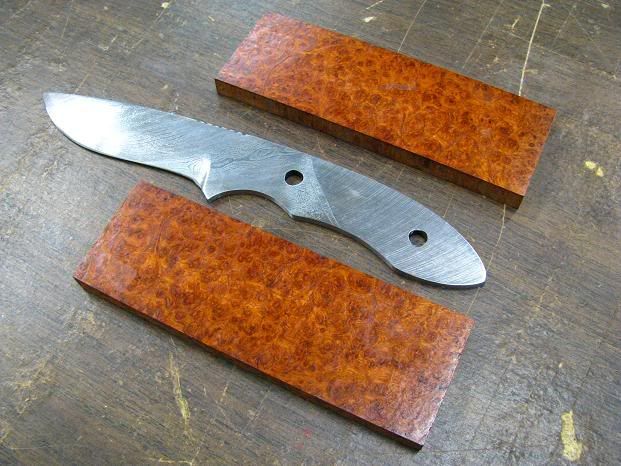
The woods I'm using are
1. South African, Bloodwood
2. South American, Cocobolo
3. Good old Wisconsin, Hard rock Maple
4. Sotheast Asian, Amboyna
This knife handle will have an impressive global pedigree
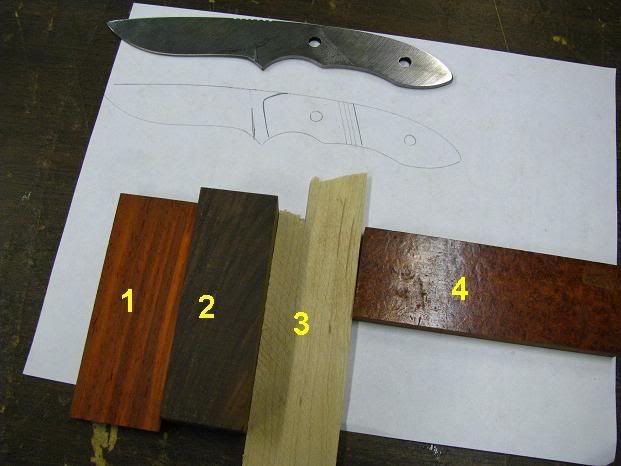
After laying out the pattern I wanted, I cut the pieces to size and rinsed 1, 2 and 4 in Acetone to remove the oils so the epoxy would give a better hold. Here they are waiting for the slow cure epoxy to do it's thing.

I am also making the pins from a variety of materials such as aluminum, brass, copper and maple. They will also be held together with epoxy.
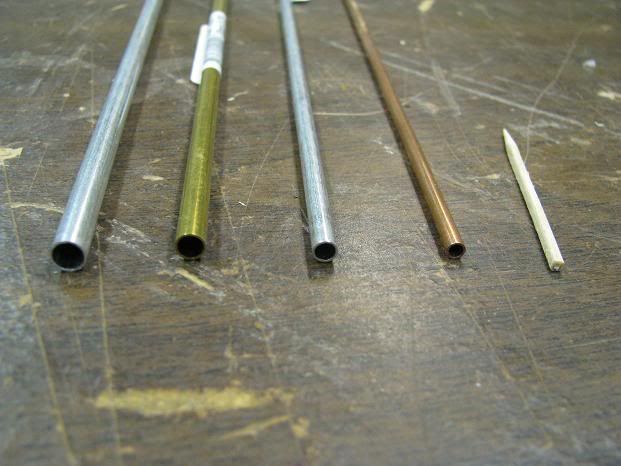
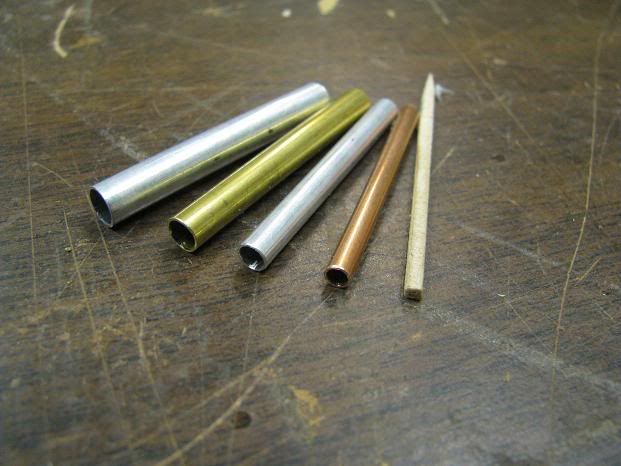

Once all the components have time to cure, I will assemble the parts and shape the wood into what is hopefully a comfortable and attractive grip.
After the epoxy cured, I use the blade as the pattern to outline the shape of the handle and then cut it to size leaving a little extra material all the way around for cleanup. I also decided to add 1/16 thick Cocobolo spacers.
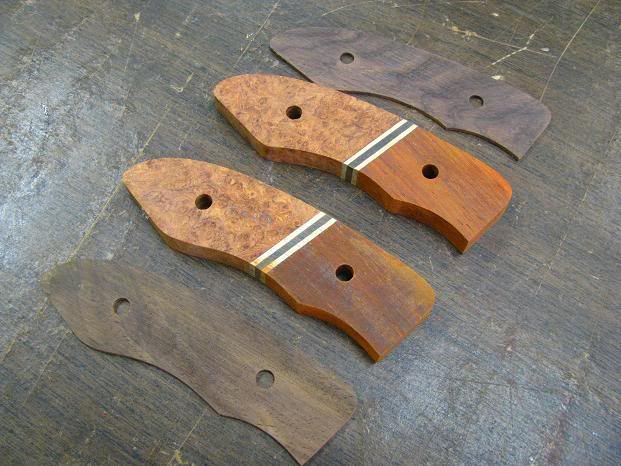
The spacers go against the metal of the handle and give another layer of color. Here it is assembled for a dry fit-up test.
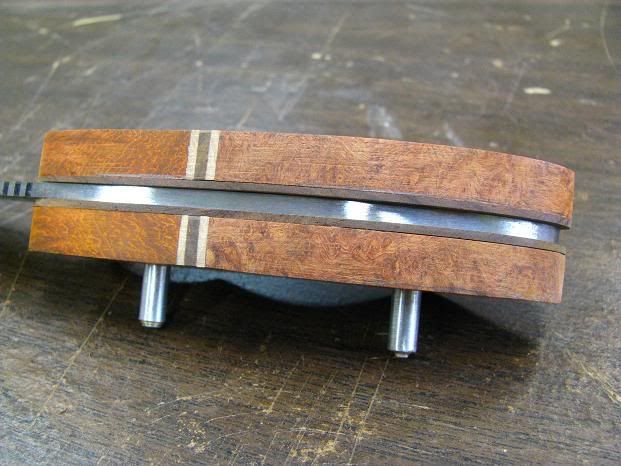
Fast forward past sanding and applying 8 coats of super glue as the finish and this is what you have.
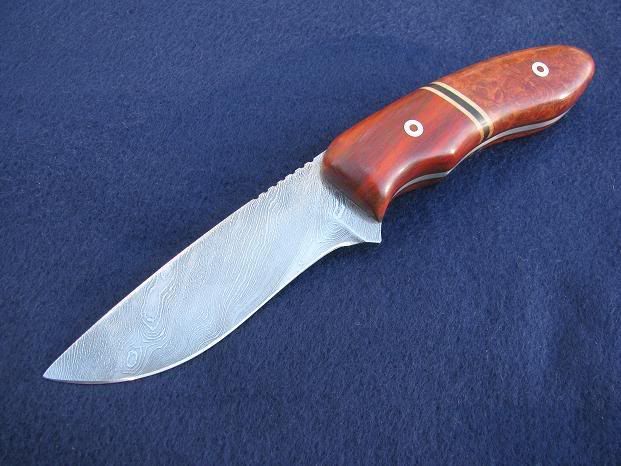
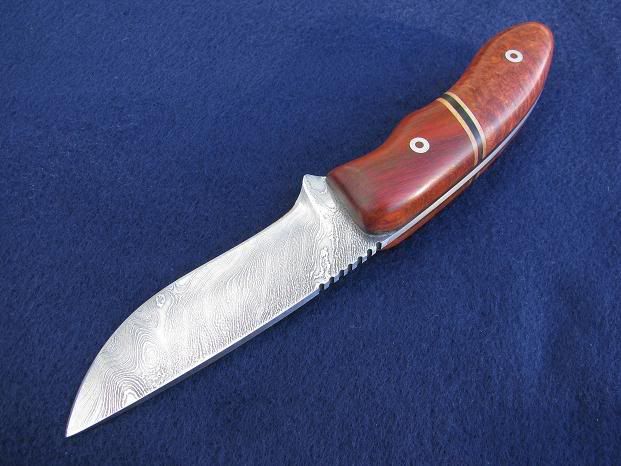
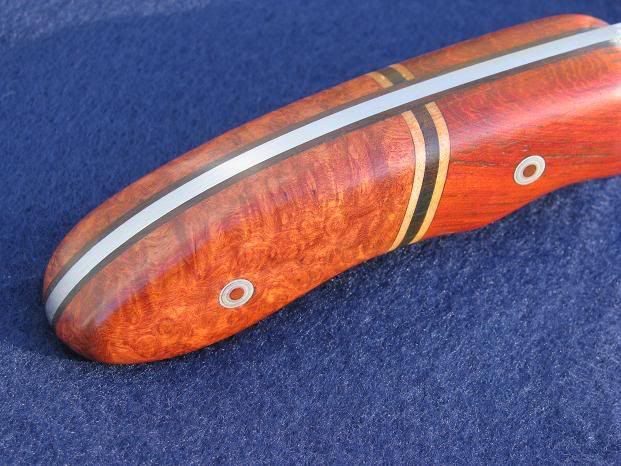
I think the cocobolo spacers give a great look to the handle.
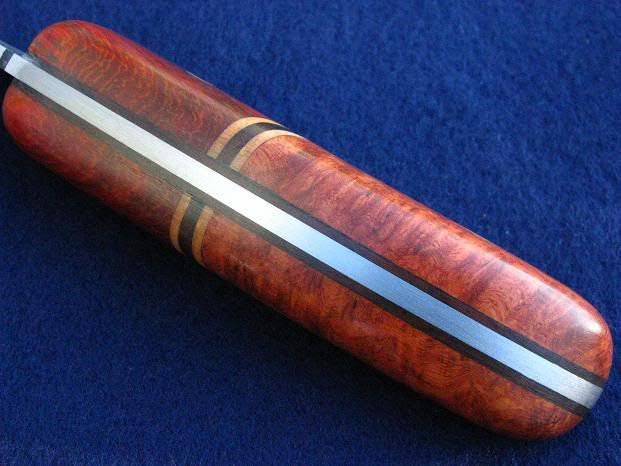
Since the center of the pins is maple, prior to applying the finish, I held a red Sharpie marker against the wood and let it soak up the red ink.
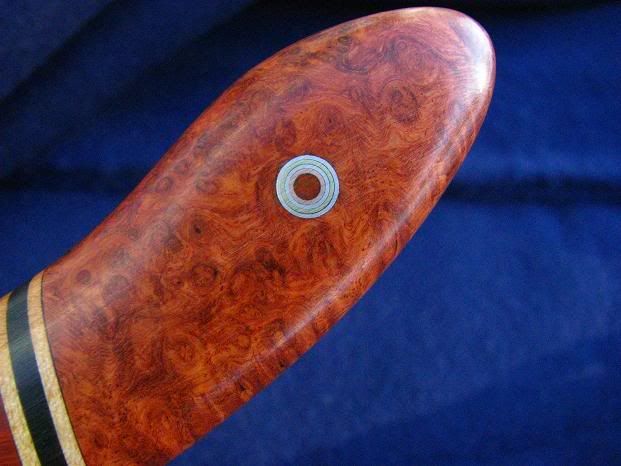
Fast forward a little more and I have a sheath.
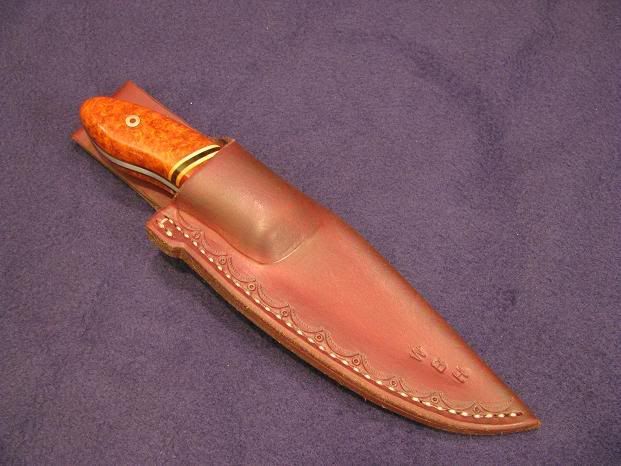
Flash forward again and you see the display base I made from bubinga. I used the same red/brown stain that I used to die the leather for the sheath to make the wood a little more red. I added a small antler and a WBH lapel pin and a gloss lacquer finish. I hope this knife helps in their fund raising effort.
